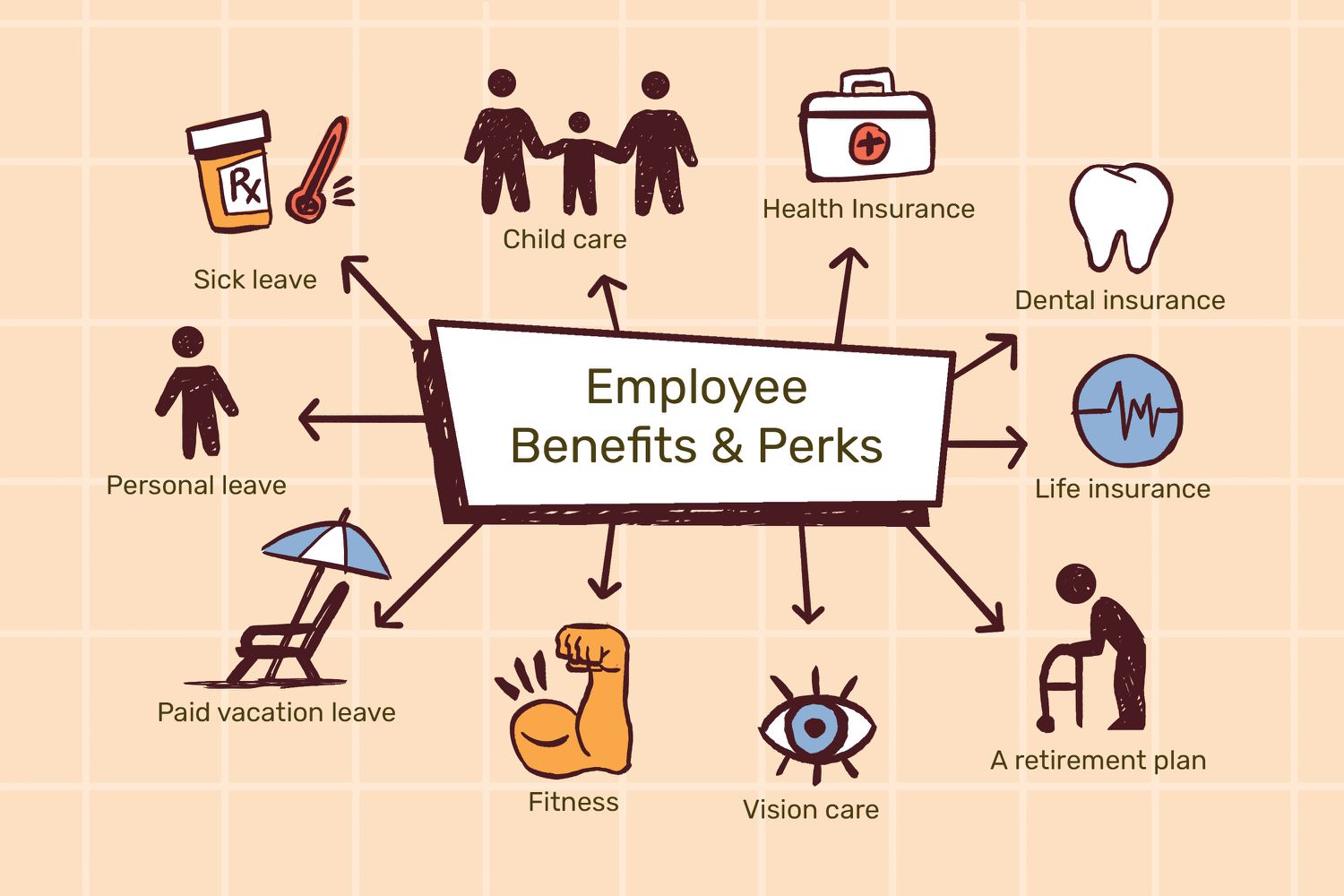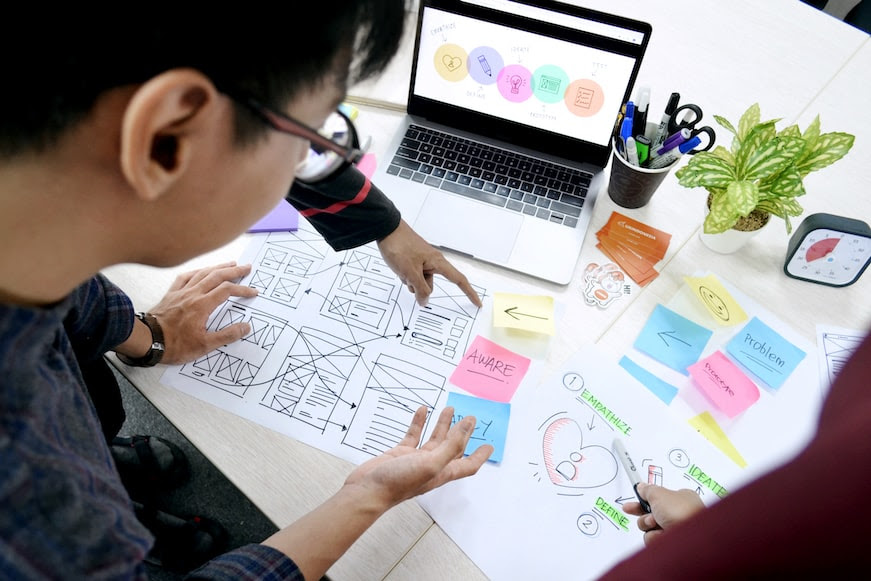Hiring the right employee is one of the key things to consider when hiring an employee. It’s a pivotal moment in the growth and success of any organization. The individuals you bring on board can shape your company’s culture, drive innovation, and contribute to achieving your business objectives. Therefore, it’s crucial to approach the hiring process with careful consideration and a strategic mindset.
According to statistics, 76% percent of hiring managers admit attracting the right job candidates is their greatest challenge.
Whether you’re a seasoned hiring manager or a business owner embarking on your first hiring journey, this guide will provide you with valuable insights and practical advice to ensure that you make informed decisions that positively impact your organization. Let’s delve into the seven critical considerations that will help you build a strong and thriving team.
Things to Consider When Hiring an Employee for Your Business
1. Job Role Clarity
When seeking to hire a new employee, “things to consider when hiring an employee” involve establishing absolute clarity about the role you are looking to fill within your organization. Defining the job responsibilities and expectations is essential not only for attracting the right candidates but also for ensuring a smooth onboarding process and long-term success.
A. Defining Job Responsibilities
Before you start the hiring process, take the time to thoroughly outline the specific responsibilities that the new employee will be expected to undertake. This involves breaking down the role into distinct tasks, projects, and objectives. By having a comprehensive understanding of the job responsibilities, you can create a clear job description that accurately communicates the expectations to potential candidates.
A well-defined job description not only attracts candidates who are genuinely interested and suited for the role but also helps you assess their fit during the interview process. It serves as a reference point for both the hiring team and the candidate, ensuring that everyone is on the same page regarding what the position entails.
B. Outlining Qualifications and Skills
Beyond job responsibilities, it’s crucial to outline the qualifications and skills necessary for success in the role. This includes both hard skills, such as technical competencies and industry-specific knowledge, and soft skills, such as communication, teamwork, and problem-solving abilities.
Consider what level of experience is required for the role. Are you looking for entry-level candidates, mid-level professionals, or seasoned experts? Clearly define the educational background, certifications, and professional experience that are prerequisites for the job.
Additionally, identify any specific skills that are essential for the role, such as proficiency in certain software tools, languages, or techniques. These qualifications and skills serve as benchmarks for evaluating candidates and ensure that you’re selecting individuals who possess the capabilities needed to excel in their new position.
Related Article: How to Hire Employees for Startup
2. Cultural Fit

Hiring an employee who aligns with your company’s culture is one of the key things to consider when hiring an employee. It’s more than just a buzzword; it’s a critical factor that can influence team dynamics, collaboration, and overall organizational success. A candidate’s cultural fit goes beyond their technical skills and qualifications – it’s about finding someone who resonates with your company’s values, beliefs, and working environment.
A. Understanding Company Culture
Company culture is the collective personality of your organization. It encompasses the shared values, norms, behaviors, and attitudes that shape how employees interact and work together. Before you start evaluating candidates for cultural fit, it’s essential to have a deep understanding of your own company culture.
Take the time to assess your organization’s values, mission, and vision. What kind of working environment do you cultivate? Is your culture more traditional or innovative? Are collaboration and teamwork highly valued, or is there an emphasis on individual contribution? By gaining a comprehensive understanding of your company’s culture, you can better articulate it to potential candidates and ensure that you’re selecting individuals who will thrive within your organization.
B. Assessing Cultural Alignment
Assessing a candidate’s cultural fit requires a multi-faceted approach. During the interview process, consider incorporating behavioral questions that delve into the candidate’s past experiences and how they align with your company’s values. For instance, you might ask about situations where they had to collaborate with diverse teams or adapt to a rapidly changing environment.
Additionally, consider organizing a meet-and-greet session where the candidate has the opportunity to interact with potential future colleagues. This can provide valuable insights into how well they mesh with the existing team and whether their communication style and interpersonal skills align with your company’s culture.
It’s important to note that cultural fit doesn’t mean hiring people who are exactly like everyone else in the organization. Diversity of thought and background can enrich your company culture and drive innovation. Instead, aim to assess whether a candidate’s values, work style, and approach to problem-solving harmonize with your company’s overall ethos.
Explore the balance between culture fit and skills in hiring. Read our in-depth article to make informed decisions for your next recruitment process.
3. Skills and Competencies
The skills and competencies that an employee brings to the table are among the key things to consider when hiring an employee. They form the foundation for their performance and contributions. As you evaluate potential candidates, it’s crucial to meticulously assess the specific skills required for the role and how a candidate’s past experience aligns with those needs.
A. Identifying Essential Skills
Begin by clearly outlining the key skills and competencies that are essential for success in the job role. These skills can encompass a wide range of areas, including technical proficiencies, communication abilities, problem-solving skills, and leadership qualities. Consult with relevant team members and stakeholders to ensure that you have a comprehensive list that reflects the role’s demands.
Consider both hard skills and soft skills. Hard skills are tangible, teachable abilities like coding languages or design software proficiency. Soft skills are less tangible but equally vital, encompassing traits like adaptability, teamwork, and time management.
Identifying essential skills provides you with a benchmark against which you can evaluate candidates. It helps you prioritize what is truly necessary for the role and guides your decision-making throughout the hiring process.
B. Evaluating Relevant Experience
While skills provide a foundation, experience provides the context in which those skills have been applied. When reviewing a candidate’s experience, look for relevant positions, projects, or accomplishments that demonstrate their ability to excel in the role you’re hiring for.
Evaluate the scope and complexity of their previous responsibilities. How do these experiences align with the challenges they would face in your organization? Consider the industries they’ve worked in, the scale of projects they’ve managed, and the level of autonomy they’ve had.
However, keep in mind that relevant experience doesn’t always mean an exact match. Transferable skills from a different industry or role can bring fresh perspectives and creative solutions. Look for candidates who have a track record of learning and adapting quickly.
When assessing experience, also consider the candidate’s progression and growth over time. Have they taken on increasingly challenging roles? Have they demonstrated a commitment to professional development and continuous learning?
Discover why hiring the right employee is vital for your organization. Read our article now!
4. Interview and Assessment

The interview and assessment stage is where you delve deeper into a candidate’s qualifications, personality, and potential to thrive within your organization. These are crucial things to consider when hiring an employee. By employing structured interviewing techniques and carefully designed assessment methods, you can gain valuable insights that go beyond a resume’s surface.
A. Structured Interviewing
Structured interviews provide a consistent and fair way to evaluate candidates by asking each applicant the same set of predetermined questions. This approach allows you to compare responses objectively and assess how well candidates align with the job requirements and company culture.
Create a list of standardized questions that cover a range of topics, including the candidate’s background, skills, problem-solving abilities, and fit with your company’s values. This ensures that you gather consistent information from all candidates and can make more informed comparisons.
B. Using Behavioral Questions
Behavioral questions are a powerful tool for assessing a candidate’s past behavior and predicting how they might handle situations in the future. These questions ask candidates to provide specific examples from their previous experiences, shedding light on their skills, decision-making, and interpersonal interactions.
For instance, you might ask, “Can you describe a time when you had to resolve a conflict within a team?” This question provides insights into their communication, conflict resolution skills, and teamwork.
Behavioral questions help you gauge a candidate’s suitability for the role based on real-life scenarios, enabling you to make more accurate predictions about their potential performance.
C. Technical Proficiency Evaluation
For roles that require specific technical skills, a technical proficiency evaluation is essential. This assessment can take various forms, such as coding tests, design challenges, or problem-solving exercises. These evaluations directly measure a candidate’s ability to apply their skills in practical situations.
Develop assessments that mirror tasks the candidate would encounter in the role. This not only gauges their technical skills but also provides a glimpse into their problem-solving approach and thought process. Ensure that the evaluation aligns with the complexity and demands of the position.
Technical proficiency evaluations help you ascertain a candidate’s level of expertise and confirm whether they possess the skills necessary to excel in their prospective role.
Related Article: Cost of Hiring First Employee
5. Diversity and Inclusion
Building a diverse and inclusive workforce isn’t just one of the things to consider when hiring an employee; it’s a matter of social responsibility and a strategic advantage for organizations. Embracing diversity in all its forms – including gender, ethnicity, age, background, and perspectives – brings a range of benefits that contribute to a thriving and innovative workplace.
A. Importance of Diverse Teams
Diverse teams bring a wealth of perspectives and ideas to the table, fostering creativity and driving innovation. When employees from different backgrounds collaborate, they bring unique viewpoints that can lead to more well-rounded solutions and better decision-making.
Inclusion, on the other hand, ensures that all employees feel valued, respected, and heard. When individuals are included and empowered to contribute fully, they are more engaged, motivated, and likely to remain loyal to the organization.
Furthermore, a diverse and inclusive workforce can better connect with a varied customer base, enhancing customer satisfaction and broadening market reach. This leads to an improved brand reputation and a competitive edge in the global marketplace.
B. Mitigating Bias in Hiring
Unconscious biases can unknowingly influence hiring decisions, leading to the perpetuation of homogenous teams. To create a diverse and inclusive workforce, it’s essential to actively mitigate bias throughout the hiring process.
Start by raising awareness among hiring team members about common biases and their potential impact. Implement blind screening techniques where possible, such as removing personally identifiable information from resumes. Focus on skills, qualifications, and experience rather than personal attributes.
Standardize interview questions and evaluation criteria to ensure consistency and fairness across candidates. Consider implementing diverse interview panels to minimize individual biases and provide a range of perspectives.
Invest in training and workshops for hiring managers and team members to recognize and address bias in all its forms. Encourage open dialogue and ongoing education about diversity and inclusion to create a culture that actively embraces these principles.
Bonus Article: Challenges in Hiring Employees
6. Compensation and Benefits

Compensation and benefits, among the things to consider when hiring an employee, play a crucial role in attracting top talent and retaining valuable employees. A well-structured compensation package not only reflects the value of a candidate’s skills and contributions but also demonstrates your commitment to their well-being and professional growth.
A. Offering Competitive Compensation
Competitive compensation is a fundamental factor in attracting and retaining skilled employees. Research industry standards and benchmarks to ensure that the salary you offer is competitive within your sector and region.
Consider the candidate’s skills, experience, and the responsibilities of the role when determining compensation. A transparent approach to compensation, where candidates understand how their salary is determined, builds trust and reduces misunderstandings.
While salary is essential, also take into account other forms of compensation, such as bonuses, commissions, and stock options. These incentives can motivate employees and align their interests with the company’s success.
B. Additional Perks and Benefits
Beyond salary, additional perks and benefits can greatly influence a candidate’s decision to join your organization and contribute to their job satisfaction. These perks can range from healthcare and retirement plans to flexible work arrangements and professional development opportunities.
Health and wellness benefits, such as comprehensive medical coverage, wellness programs, and mental health support, contribute to employees’ overall well-being and productivity.
Professional development opportunities, including training, workshops, and career growth paths, demonstrate your commitment to helping employees enhance their skills and advance in their careers.
Work-life balance benefits, like flexible work hours, remote work options, and parental leave, accommodate the diverse needs of your workforce and contribute to a positive work environment.
Additional perks, such as employee discounts, gym memberships, and company events, create a sense of belonging and camaraderie among team members.
Tailor your benefits package to align with the needs and preferences of your target candidates. Transparently communicate the perks and benefits during the hiring process to showcase the holistic value you offer as an employer.
Ready to streamline your hiring process? Dive into our comprehensive guide on the proven hiring process flowchart. Unlock success today!
Conclusion
The hiring process is a dynamic and multifaceted journey that requires careful consideration and strategic planning. By incorporating these seven key considerations – job role clarity, cultural fit, skills and competencies, interview and assessment techniques, diversity and inclusion, and compensation and benefits – you ensure that you thoroughly address all things to consider when hiring an employee, paving the way for building a high-performing team that drives your organization’s success well into the future.
Are you looking to hire mobile app development team to work collaboratively on your mobile app project? Our developers have profound expertise in building iOS, Android and Cross-Platform apps.









